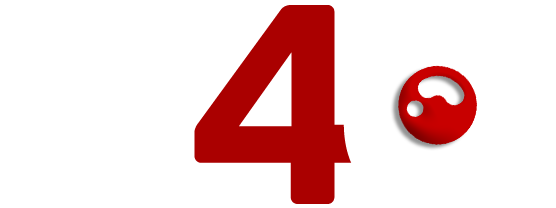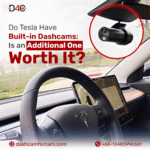Why should you install a dash comb in your vehicle? Whether you are a daily commuter, a car tour enthusiast or a fleet manager, Dash Cams offers unmatched protection, safety and security. From catching accidents to preventing fraud, the benefits of dash cam go far beyond simple recording. In this guide, we will explore why each driver should consider one – and how to choose the best model for your needs.
2. What is Dash Cam? Understanding Your Road Guardian
A dash camera (dashboard camera) is a small device mounted on the windshield or dashboard that records video while driving. Unlike smartphones, dash cams automatically:
✔ Start recording when you turn on the car
✔ Save footage in loops (overwriting old videos)
✔ Catch decisive moments in HD or 4K quality
Modern line cameras also have GPS tracking, night vision and AI-driven security alerts, making them important for safer, smarter driving.
3. Top Benefits of Dash Cam Every Driver Should Know
Here are 10 key benefits of dash cams that make them worth installing:
- Evidence in Accidents – Proves fault in crashes for insurance claims.
- Fraud Prevention – Stops staged accidents & false injury claims.
- Safer Driving Habits – Encourages responsible driving.
- Hit-and-Run Protection – Captures license plates of fleeing drivers.
- Parking Mode Security – Records vandalism/theft even when parked.
- Lower Insurance Costs – Some insurers offer discounts for dash cam users.
- Fleet Management – Helps businesses monitor driver behavior.
- Road Trip Memories – Records scenic drives and adventures.
- AI Safety Alerts – Warns of collisions, lane departures, and fatigue.
- Peace of Mind – Acts as a 24/7 witness on the road.
4. Dash Cam Advantages and Disadvantages: Balanced View
Like any technology, trace cameras come with advantages and limitations. On the positive side, they provide undeniable evidence in accidents, discourage fraudulent claims and improve the driver’s responsibility. However, they also raise concerns about privacy, require periodic maintenance and may have legal restrictions on certain regions. Understanding pros and cons of dash cam help drivers make the best choice for their needs.
| Advantages | Disadvantages |
|---|---|
| ✔ Clear accident evidence | ✖ Privacy concerns (recording others) |
| ✔ Deters insurance fraud | ✖ Cost (premium models can be expensive) |
| ✔ Improves driver behavior | ✖ Can distract if poorly mounted |
| ✔ Works in extreme weather | ✖ Legal restrictions in some areas |
| ✔ Easy to install & use | ✖ Requires SD card maintenance |
5. Beyond Basics: Why Use a Dash Cam You Might Not Know
Today’s dash cams go far beyond basic video recording, offering cutting-edge technology for enhanced safety. Features such as AI -powered, cloud backup and driver behavior score add extra safety layers. Real -time GPS tracking and smartphone application integration further increase convenience, making modern panel cameras indispensable for drivers who know technology.
- AI-Powered Alerts – Warns of collisions before they happen.
- Cloud Backup – Stores footage online (no risk of losing SD card data).
- Driver Scoring – Rates driving habits for fleet managers.
- Real-Time GPS Tracking – Helps recover stolen vehicles.
- Integration with Apps – View live footage from your phone.
6. Choosing Your Perfect Dash Cam: Feature-by-Feature Guide
The selection of the best trace camera depends on several factors to meet your driving needs. Video quality (1080p vs. 4K) determines clarity, while single or double lens settings affect the coverage area. Storage capacity, night vision capacity and parking mode functionality also play crucial performance roles. Evaluation of these features ensures that you get the most reliable and efficient trait camera.
- Video Quality: 1080p (good) vs. 4K (best for details).
- Single vs. Dual Lens: Is a rear dash cam necessary? Yes, if you want full coverage.
- Storage: 32GB–256GB SD cards (higher capacity = longer recording).
- Night Vision: Infrared or HDR for low-light clarity.
- Parking Mode: Motion-activated recording when parked.
7. Installation Made Simple: Where and How to Mount Your Dash Cam
Proper installation is essential for the ideal performance of the trace camera without obstructing its view. The ideal positioning is behind the rearview mirror, ensuring a clear recording while remaining discreet. Power options vary—cigarette lighter connections are simple, while hardwiring enables parking mode. Always avoid blocking airbags or critical sightlines for safe and legal use.
- Best Placement: Behind the rearview mirror (doesn’t block view).
- Power Options: Cigarette lighter (easy) vs. hardwiring (for parking mode).
- Avoid: Blocking airbags or driver’s line of sight.
8. Maximizing Your Dash Cam Benefits: Usage Tips
To make the most of your camera, regular maintenance and smart settings are key. SD card formatting avoids file corruption, while loop recording ensures continuous images without manual deletion. Additionally, verifying local laws on dash cam admissibility keeps your evidence valid for insurance or legal disputes.
✔ Format SD cards monthly to prevent errors.
✔ Enable loop recording to auto-delete old footage.
✔ Check local laws on dash cam admissibility in court.
9. Real Stories: How Dash Cams Saved Lives and Money
Trace cameras repeatedly proved their value in real -world scenarios, protecting drivers from expensive and stressful situations. Since the exposure of staged accidents that frustrates fraudulent insurance claims help police recover stolen vehicles, these devices provide undeniable evidence when it matters most. Many drivers have avoided financial losses and legal troubles—all thanks to clear dash cam footage.
- $10,000 Fraud Stopped: A driver proved a “fake injury” claim was staged.
- Stolen Car Recovered: GPS tracking led police to the vehicle in 2 hours.
- Hit-and-Run Solved: Clear footage helped identify the fleeing driver.
10. Conclusion: The Future of Dash Cams in Vehicle Safety
The benefits of dash cams are undeniable—from accident proof to AI-powered safety. As technology evolves, expect smarter features like automatic emergency calls and self-driving integrations.

